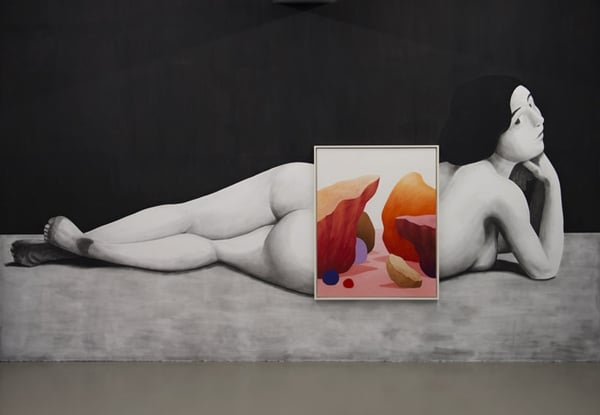
Photo: courtesy of the Modern Institute.

Christie Chu

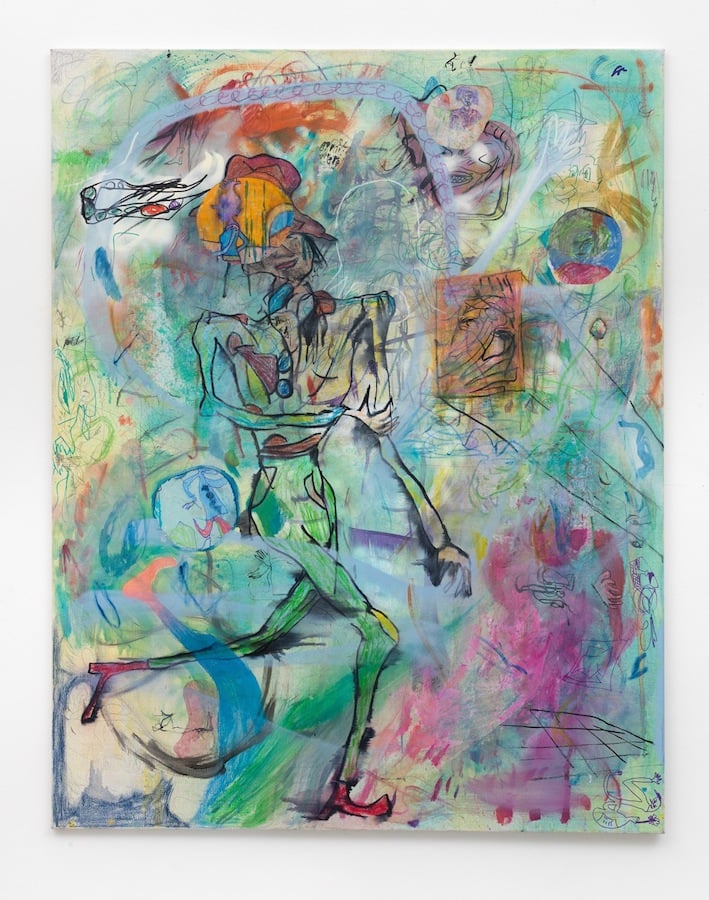
Max Brand, Untitled (2013).
Photo: courtesy of Jacky Strenz.
It’s no secret art dealers, collectors, critics, and curators are always on the hunt to discover up-and-coming artists who are destined for greatness. Although no list is ever finished, of course, artnet News has narrowed down the search, focusing on 10 up-and-coming artists born after 1980, many of whom are already being snapped up by savvy collectors. Whether you see their work in between the aisles at a fair or during a gallery visit, our alphabetical list of artists to keep an eye on will guide you to the next generation as they rise to the top.
1. Max Brand (b. 1982)
Berlin-based artist-musician Max Brand (work pictured above) uses various mediums including spray paint, chalk, and marker to create colorful, frenzied, layered canvases. Drawing upon a wide array of influences, including German Expressionism to Japanese anime, Brand’s canvases have become highly sought after. In 2012, the artist had his first US solo show debut at MoMA PS1. This past year, Brand was in a two-person show with rising star Lena Henke at Off Vendome, and he currently is in a group show at Tomorrow Gallery, where he has painted a site-specific mural.
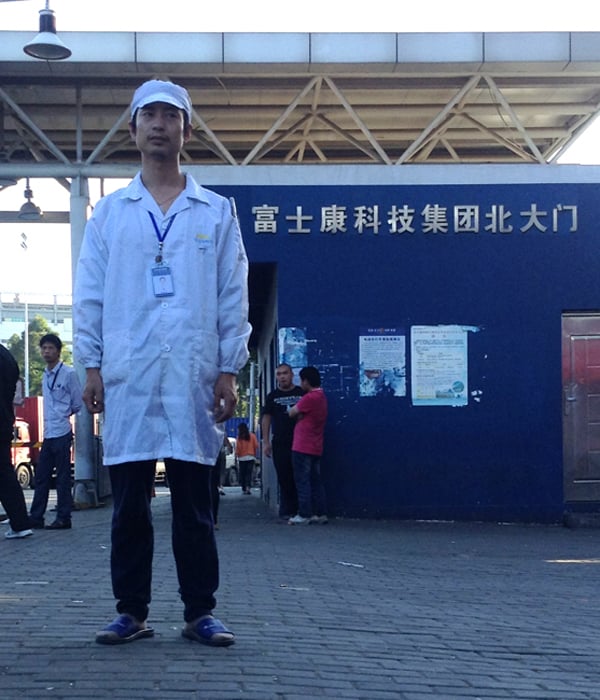
Li Liao, Consumption (2012).
Photo: via Visionaireworld.com
2. Li Liao (b. 1982)
Many visitors overlooked a quiet work at this year’s New Museum Triennial, as it was unfortunately positioned next to DIS’s shower spectacle on the ground floor of the space (see Is the New Museum Triennial Part of the Problem or Part of the Solution?). However, the message of Chinese artist Li Liao’s piece, titled, Consumption, was loud and clear. The 33-year-old conceptual artist worked at an Apple manufacturing plant in Shenzhen, China, for 45 days, which was the time it took to earn an iPad with his wages. “As long as you’re literate with no significant physical problems, you get hired,” the artist told the New Yorker. Li’s artwork, which includes his factory uniform, badge, and an iPad, is a much-needed comment on the high cost of luxury products, made via cheap labor.
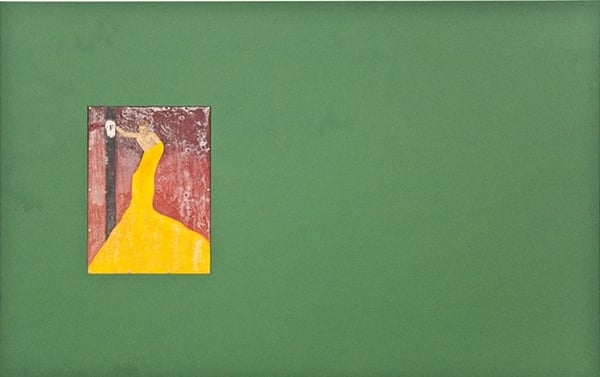
Aleksander Hardashnakov, Voyeur/Creep/Thief(2014).
Photo: courtesy of Galerie Rodolphe Janssen.
3. Aleksander Hardashnakov (b. 1982)
In 2011, along with fellow artist Hugh Scott-Douglas and dealer Tara Downs, Aleksander Hardashnakov founded Tomorrow Gallery in Toronto; in 2014, Downs took full ownership and relocated the space to New York’s Lower East Side. For his latest Tomorrow Gallery show, the artist created a site-specific installation incorporating small paintings that cover the space’s outlet sockets, lights, and steel structures. Hardashnakov is currently in a two-person show with artist Darja Bajagić in Croy Nielson‘s project space (see Why Darja Bajagić Appropriates Porn and Serial Killer Art). The Canadian-born self-taught artist’s work evokes a sense of nostalgia, romance, and mystery.
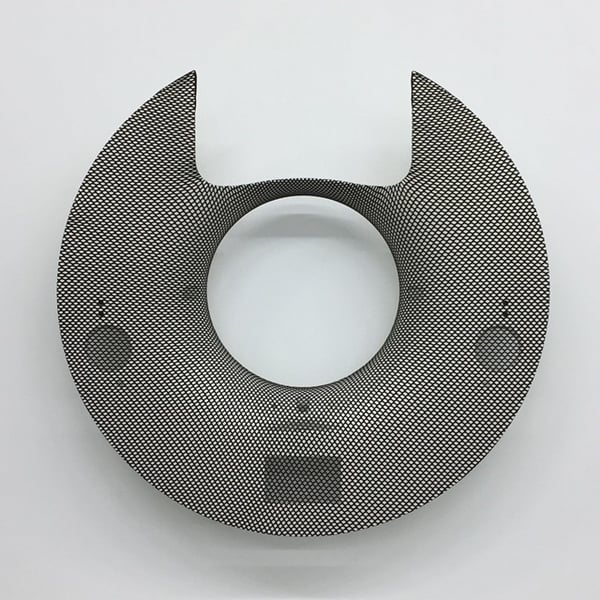
Yngve Holen, World of Hope (2015).
Photo: via Instagram/@errorezine.
4. Yngve Holen (b. 1982)
For his show at Galerie Neu, Berlin-based Norwegian artist, Yngve Holen, wrapped mesh fabric (black, white, and neon green) onto casings of CT scanners from Siemens, items usually reserved for medical research. Many of his contemporaries deal with technology and its implications on society, but Holen’s work is almost nihilist, exploring notions of individual vulnerability and immortality. For his Amsterdam show, the artist had on display domestic objects cut in half such as a water cooler and coffee machine, stripping them of their functions, drawing upon ideas laid out by his predecessors of Dadaism. Holen has also exhibited at Bergen Kunsthall in Norway and Bonner Kunstverein in Germany.
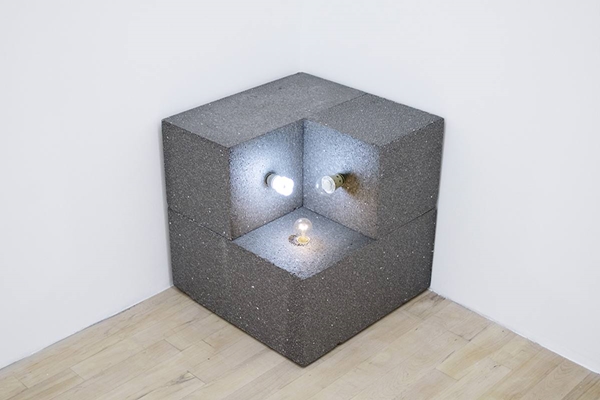
Piotr Lakomy, Need Room (2013).
Photo: courtesy of the Sunday Painter.
5. Piotr Lakomy (b. 1983)
Polish artist Piotr Lakomy’s minimalist steel works construct new images of architecture and the urban environment. In spite of its austere aesthetic, Lakomy’s work remains light and intimate. For example, Need Room is a styrofoam sculpture nestled in a corner and shaped like a granite Rubik’s Cube missing a piece. Three small light bulbs occupy the missing piece, placed as if in conversation. The Poznan-based artist, who was spotted at London-based gallery The Sunday Painter‘s booth at Art Basel in Miami last year, was recently featured in a group show in the Museum of Modern Art Warsaw and is currently in a two-person show at Hester. (see NADA Art Fair Is the Most Fun You’ll Have In Miami).

Athena Papadopoulos, installation view.
Photo: courtesy of Zabludowicz Collection, London/ Tim Bowditch.
6. Athena Papadopoulos (b. 1988)
Canadian born, London-based artist, Athena Papadopoulos, employs a variety of mediums to make her work. Playing upon the notions of the domestic sphere, the artist creates pillow sculptures and canvases stained with drugstore or grocery store finds such as Pepto-Bismol, Berocca, mustard, wine, or henna as substitutes for paint. Her work is raw and humorous, and connects with different levels of art history such as feminism, Abstract Expressionism, and abject art, without being didactic. In an interview with Blouin Art Info the artist said, “I think it is important that the body of work isn’t seen to be moving upward to a point of precision. The images and the substances that they are coated with are of a world that is sprawling, messy, and difficult.” Papadopoulos, who graduated from Goldsmiths in 2013, recently had a solo exhibition at the Zabludowicz Collection in London, and her latest show opened at Supportico Lopez for Gallery Weekend Berlin (see Berlin’s Contradictions Start Making Sense at Gallery Weekend 2015).

Nicolas Party, Pastel et Nu (2015).
Photo: courtesy of the Modern Institute.
7. Nicolas Party (b.1980)
Swiss artist Nicolas Party has got a knack for subtle elements of surprise and fun. “I never had a strong interest in reality. I always thought that the films, books, and paintings that I was looking at touched me more than the real things around me,” the artist said in an interview on Kunsthall Stavanger‘s blog. Spotted at March’s Independent art fair, Scottish gallery, the Modern Institute, brought only Party’s portraits and still lifes, where they hung his work in front of black-and-white painted walls—a usual presentation Party employs to reference his teen years growing up in Switzerland as a graffiti artist (see Youthful, Edgy Independent Art Fair Looms Large in the Art World). The artist’s funky and vibrant paintings caught the eye of collectors Robert and Nicky Wilson (see artnet News Top 200 Art Collectors Worldwide for 2015, Part Two). If a painting is not your cup of tea, Party also makes quirky furniture.
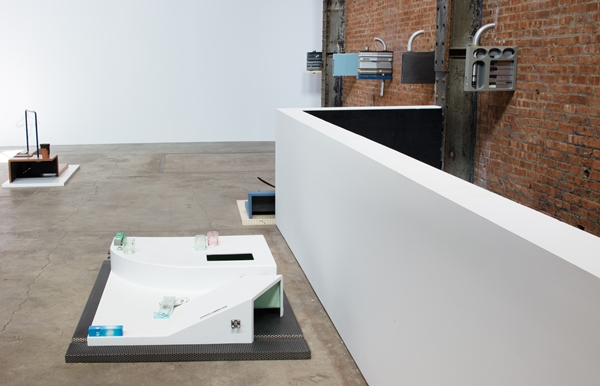
Installation view, Magali Reus: Spring for a Ground, SculptureCenter, 2015.
Courtesy the artist; The approach, London;
and Freymond-Guth Fine Arts, Zurich. Photo: Jason Mandella.
8. Magali Reus (b.1981)
The Amsterdam-born, London-based artist works often with steel, and a muted and graphic color palette. The 34-year-old rising star just opened her first solo US institutional show, “Spring for Ground,” at SculptureCenter in New York. The pieces in the show include architectural “curbs” with ancillary domestic objects attached, lain, or placed standing on 3D platforms. Most eye-catching however, are her clunky, multi-tiered steel locks, attached from the side onto the institution’s brick walls, that make the viewer do a double take. Reus has been featured in a recent group show at the Bergen Kunsthall in Norway, the LUMA Foundation in Zurich, Switzerland, and she will have a solo exhibition at the Stedelijk Museum in Amsterdam in 2016 (see €375 Million Overhaul Pays Off as Amsterdam’s Rijksmuseum Crowned Best European Museum of 2015).
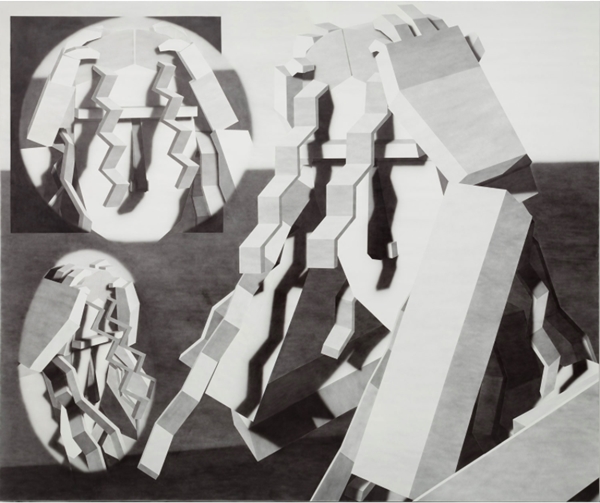
Avery Singer, Anxiety Painting (2014).
Photo: via Averysinger.com.
9. Avery Singer (b.1987)
Bronx-based artist Avery Singer didn’t study painting at the Cooper Union, where she graduated in 2010, but the last year has definitely cemented her role as a painter to watch (she is currently the top artist in ArtRank‘s “Buy Now < $100,000” category). She’s had a solo show in Berlin, and has been featured in a group exhibition at Greene Naftali, as well the Kunsthalle in Kassel, Germany. After Beatrix Ruf took notice of the artist’s stick figures, created using Photoshop and SketchUp, Ruf gave her a solo show at the Zurich Kunsthalle. Recently she was included in the New Museum’s Triennial (see The New Museum Triennial Offers a Dazzling and Dystopian Vision of the Future).
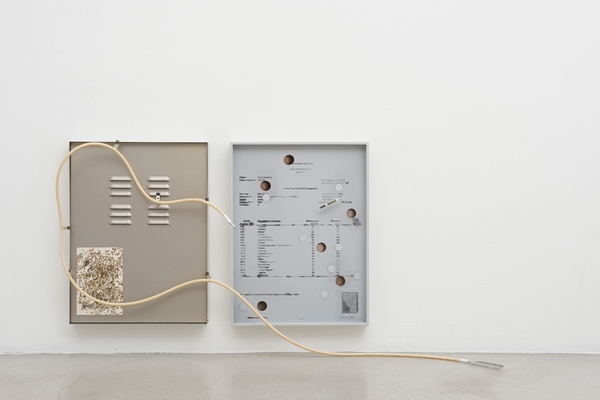
Jesse Stecklow, Installation shot of Potential Derivitives, (2014-2015).
Photo: courtesy of M + B.
10. Jesse Stecklow (b.1993)
By far the youngest artist on the list, Los Angeles-based Jesse Stecklow has a bright future ahead. His pieces have been snapped up by mega collectors Anita and Poju Zabludowicz. The artist, who is represented by M+B, recently had a solo presentation at the gallery’s LA space, and he was the only artist the gallery brought to their booth at the Armory Show this year. Stecklow makes aesthetically minimal but conceptually sophisticated work by collecting and aggregating data, and reorganizing it to make his work. “A dominant interest for me is pulling material information to have this large chain of works that never feels complete or resolved,” the artist said of his oeuvre in a recent interview with Mousse magazine. In his Untitled (Air Vent) series, the artist creates powder-coated aluminum air vents that collect airborne samples of the room. Over a period of time, he analyzes the data collected, and creates new works from the information.